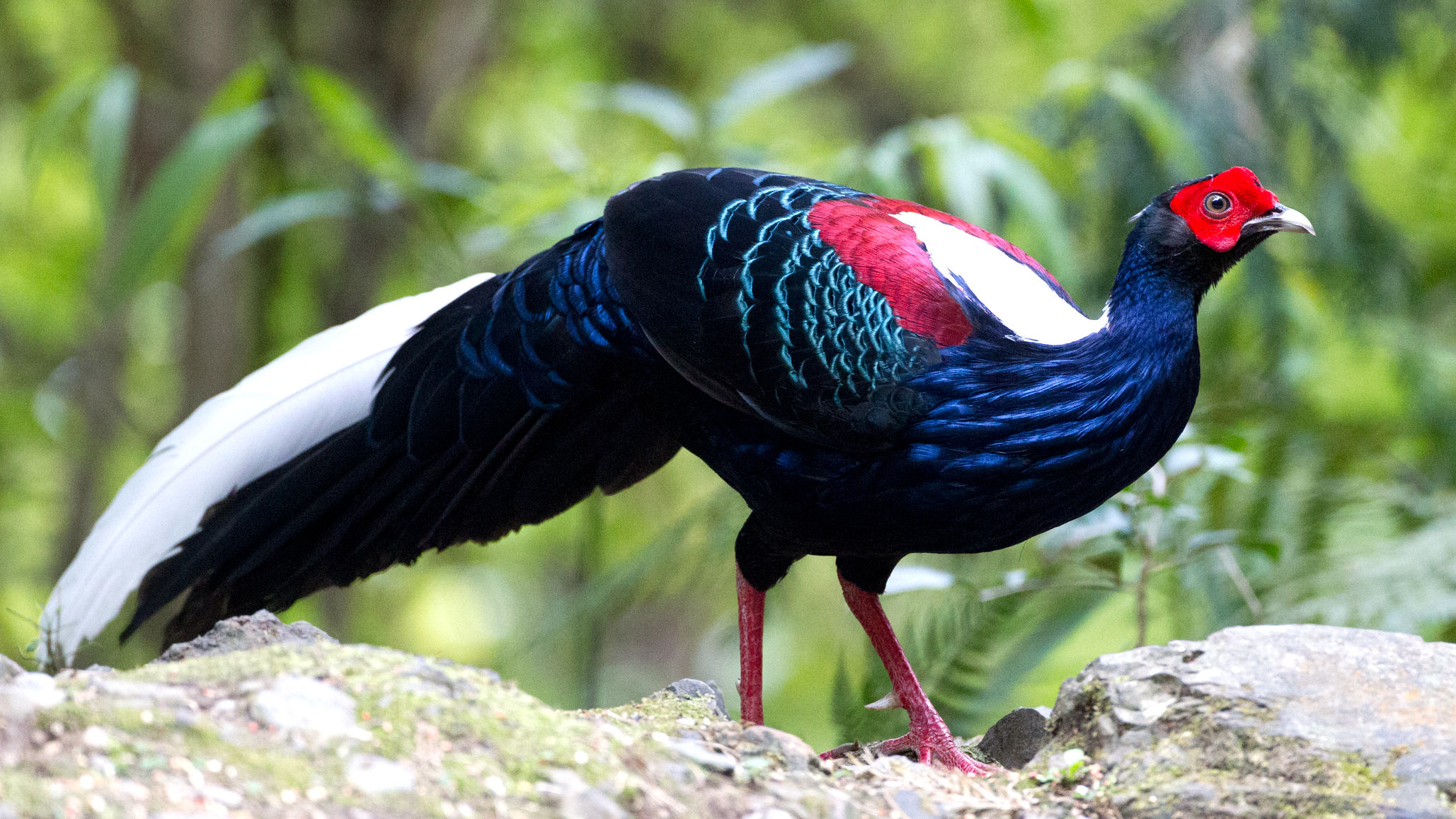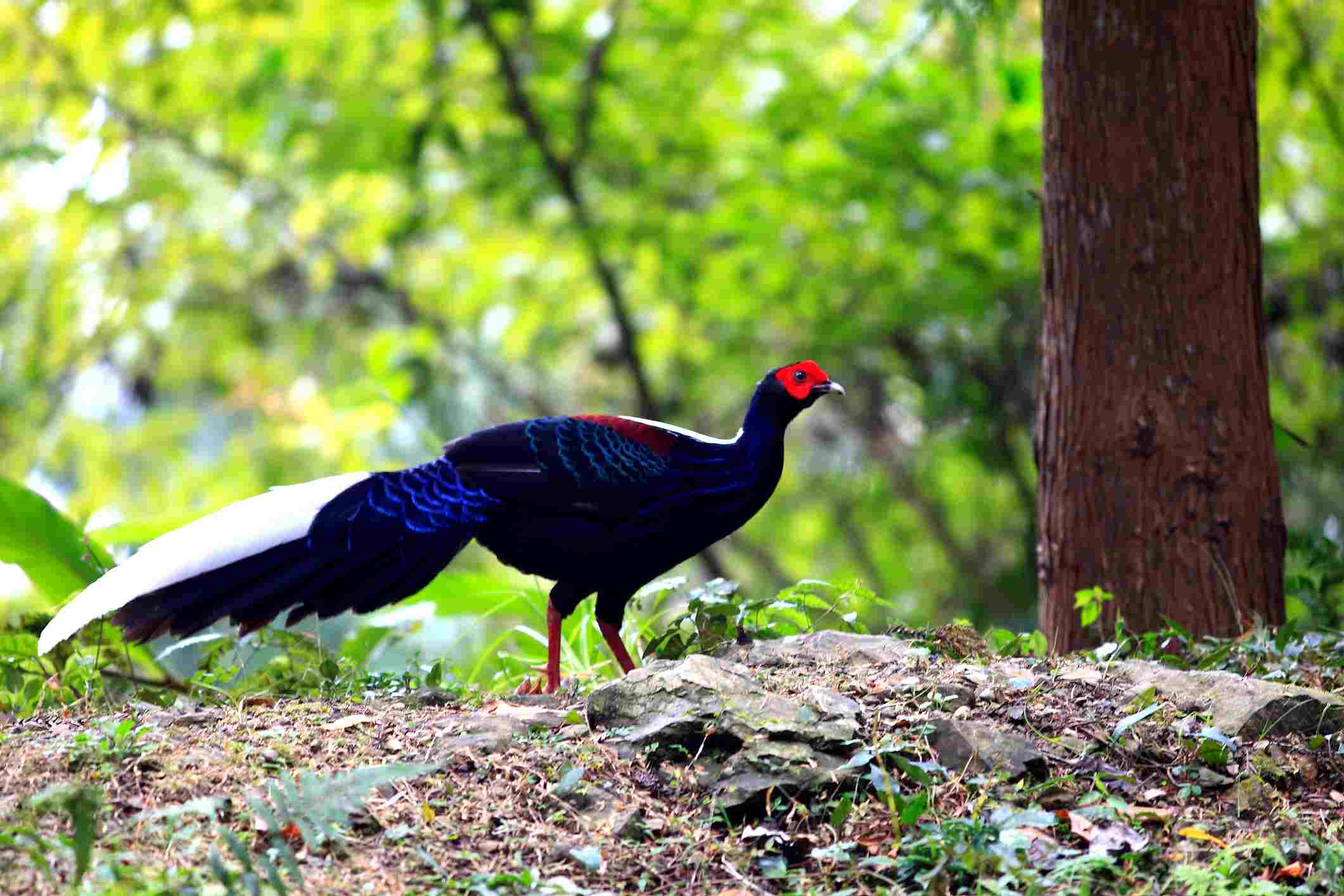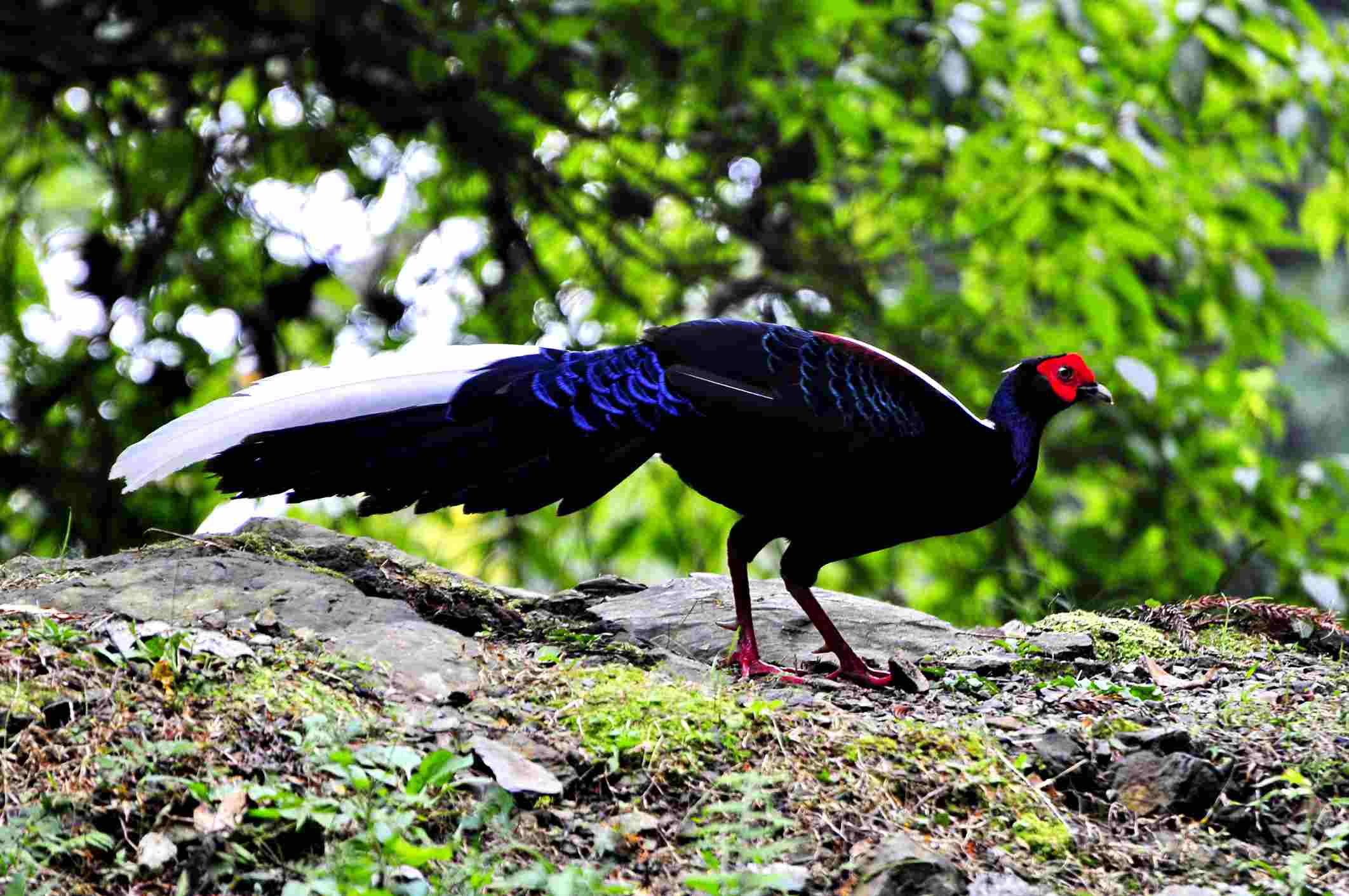
Animal
10:01, 23-Apr-2019
Birds of China: Swinhoe's pheasant
By Zhu Yingming

The Swinhoe's pheasant, or Taiwan blue pheasant, is a large pheasant species endemic to China's Taiwan.
The earliest record of the Swinhoe's pheasant was during the reign of Emperor Qianlong of the Qing Dynasty in 1753. However, it was first known to the world in 1862 via the British naturalist Robert Swinhoe, after whom the bird was named.

The Swinhoe's pheasant. /VCG Photo
The Swinhoe's pheasant. /VCG Photo
The bird feeds on fruit, plant seeds and sometimes invertebrates as snacks. The male bird likes to show off by fluttering.
The central rectrices of the males once served as the main material for the fabrication of traditional hat decor. The colorful plumage was also a favorite souvenir for tourists.

The Swinhoe's pheasant. /VCG Photo
The Swinhoe's pheasant. /VCG Photo
The Swinhoe's pheasant only inhabits the moist woodlands in the region's lower mountains at an altitude of 800-2,200 meters.
The limited habitat of this pheasant is shrinking due to logging and habitat degradation. With the exploitation of the mountains outside the nature reserves, the overhunting has just gotten worse.
By October 2016, the number of mature individuals in the world shrank to less than 7,000. It is thus recognized as a "near-threatened" species by the IUCN Red List, and is under first-class state protection in China.
Birds of China
Endemic species are indispensable for the biodiversity of the planet. Their habitat being restricted to a particular area, many of them have yet to be appreciated by the rest of the world. Starting from the precious birds that are endemic to China, this series takes you to the forest, to the wild, to the sea and the sky.
(Cover image via VCG)
(If you want to contribute and have specific expertise, please contact us at nature@cgtn.com.)

SITEMAP
Copyright © 2018 CGTN. Beijing ICP prepared NO.16065310-3
Copyright © 2018 CGTN. Beijing ICP prepared NO.16065310-3